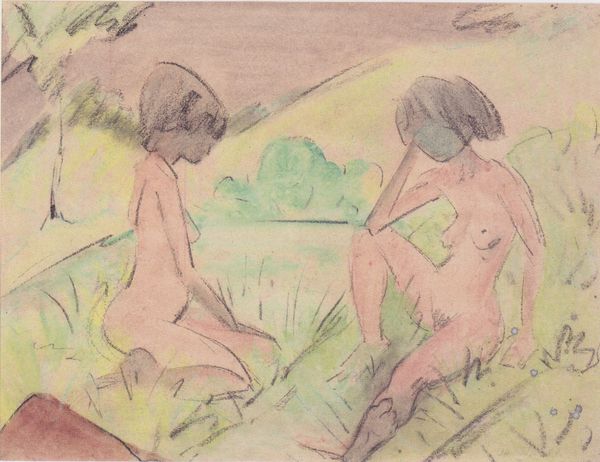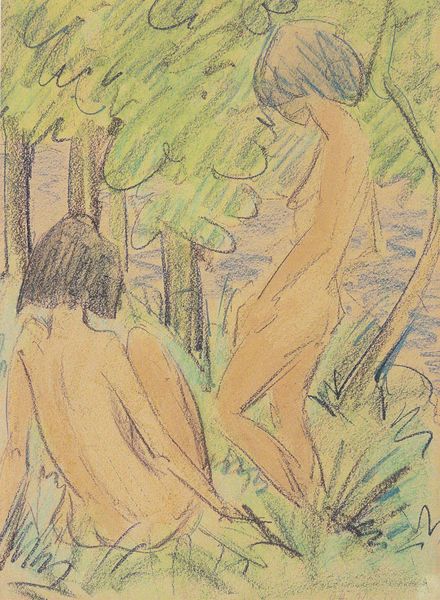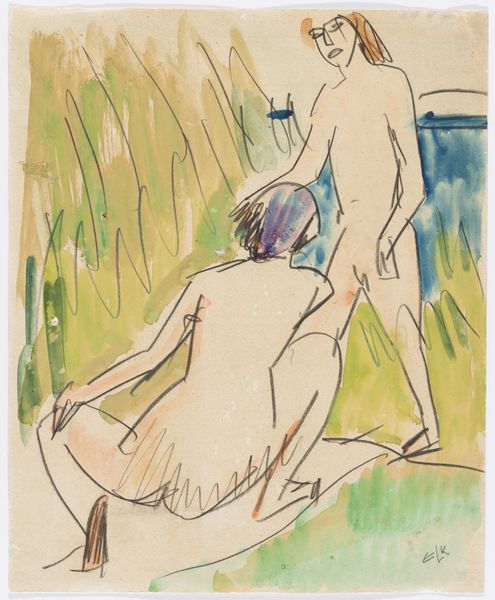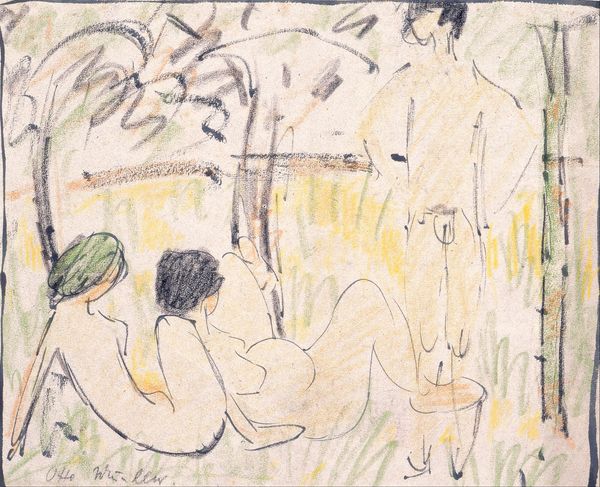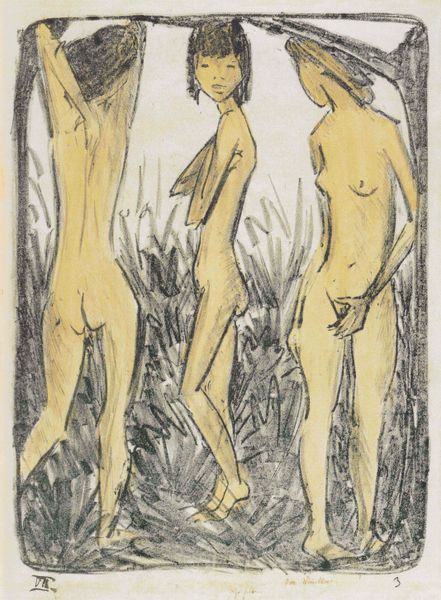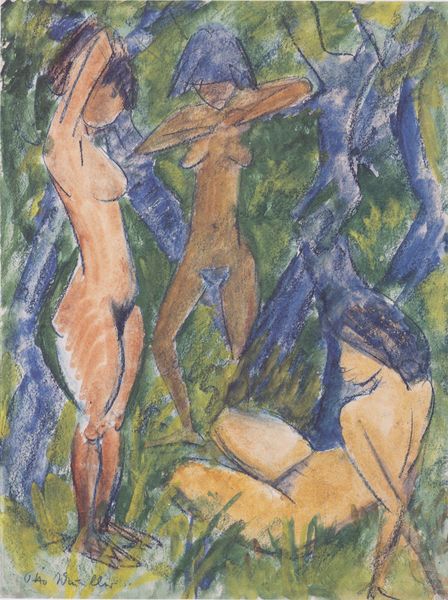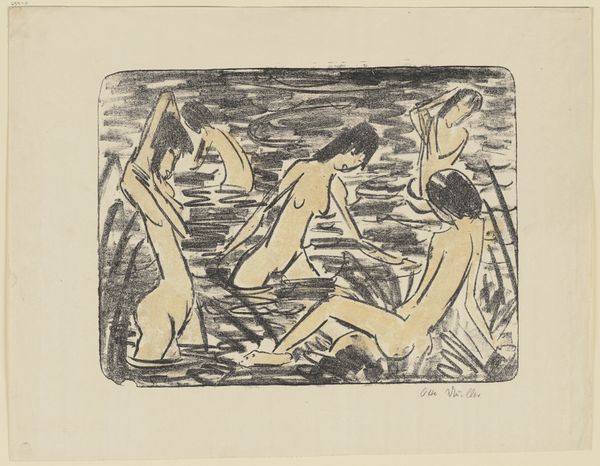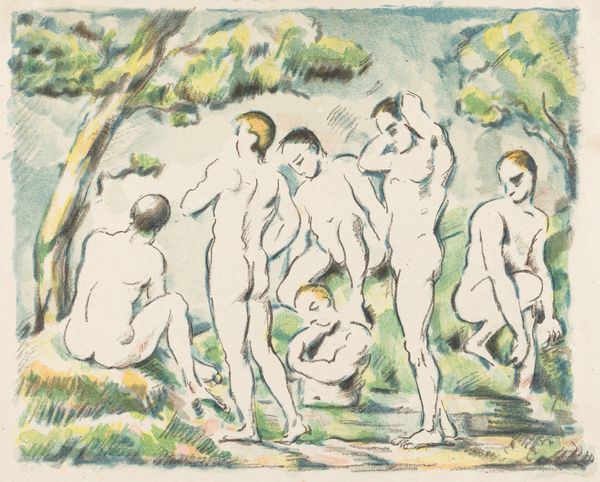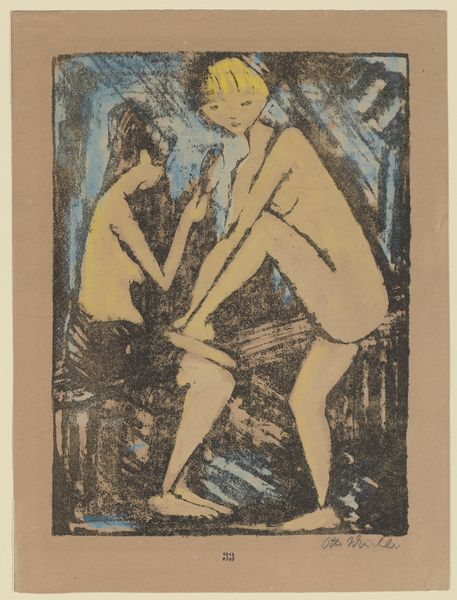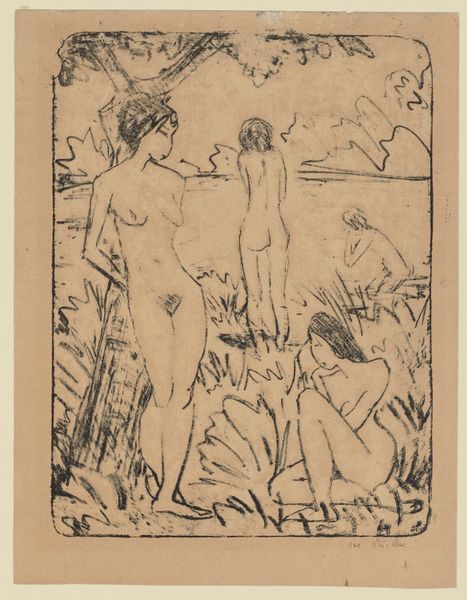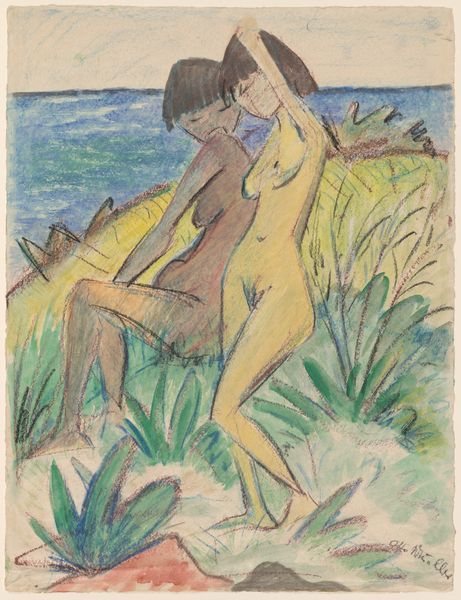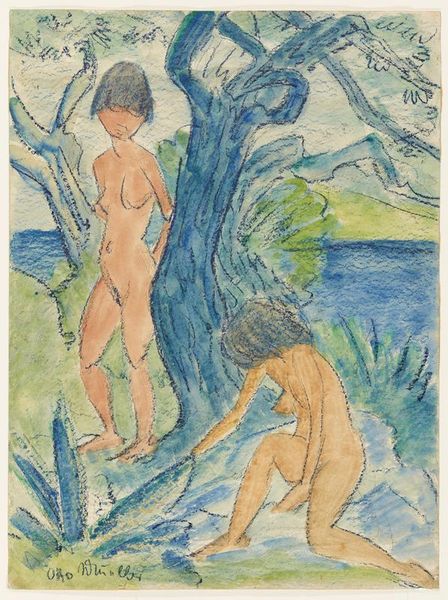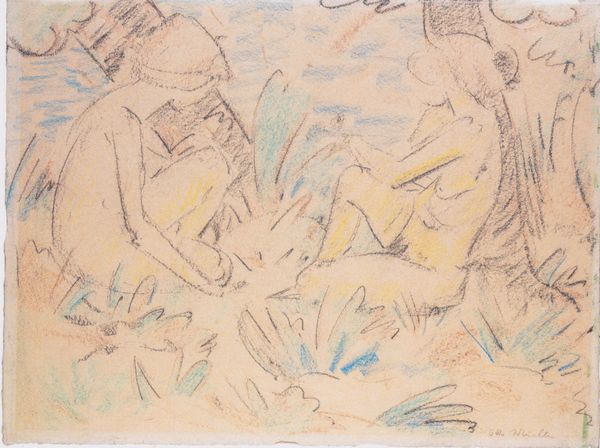
drawing, coloured-pencil
#
drawing
#
coloured-pencil
#
ink painting
#
landscape
#
figuration
#
sketch
#
expressionism
#
line
#
watercolour illustration
#
nude
Dimensions: 68.5 x 51.8 cm
Copyright: Public domain
Curator: We’re looking at Otto Mueller’s "Two Girls, One Half Lying in the Grass," created around 1924. It's rendered in coloured pencil. Editor: Immediately, the sketchy quality, the muted colors… it gives me a sense of fragility, of something fleeting and incomplete. Curator: The lack of distinct facial features invites a broader interpretation. Are these idealized forms, or is Mueller referencing an archetype of femininity within nature? Perhaps connecting it with the Primal woman archetype of the time? Editor: I see the coloured pencil more as a deliberate choice tied to materiality and its accessibility. Mueller, though associated with Die Brücke, often worked with humbler materials. It speaks to a democratizing impulse, removing art from the realm of the elite. How much did these pencils cost? Who used them besides "artists"? Curator: Interesting point. There’s an earthy quality in those limited hues as well. Brown, ochre, slate... very grounded colors that resonate strongly. Also note how line defines their forms – reminiscent of early woodcut traditions perhaps harking back to an era of greater shared visual understanding, when imagery was simpler but communication stronger? Editor: While symbolism enriches understanding, it can sometimes veil simpler realities. Mueller was invested in the life of the everyman. So while those symbol-heavy readings add meaning for art scholars, it shouldn’t overshadow his investment in showing us "girls in grass," full stop. What was it like for the common worker in this time period? Curator: So you’re seeing it as less allegorical, more a social observation of its time, less archetypes and more real women relaxing! The deliberate rawness aligns with that theory too: avoiding too much idealism emphasizes everyday existence, focusing not on immortal women or goddesses, but simply "two girls." Editor: Precisely. Focusing too heavily on just meaning sometimes distracts viewers from simply enjoying "process" -- how art, is Made, by hand using real objects. In doing that it lets us examine class structures, mass-manufacturing practices, resource chains -- and connect art less with meaning, and more with labor and social systems. Curator: That material analysis gives so much weight and a tangible dimension, but without sacrificing art's spiritual quality or visual potency... It bridges theory, production, history, psychology! Editor: And helps see beyond grand narratives or individual geniuses into how everyday decisions and materials can resonate deeply across a range of viewers!
Comments
No comments
Be the first to comment and join the conversation on the ultimate creative platform.
